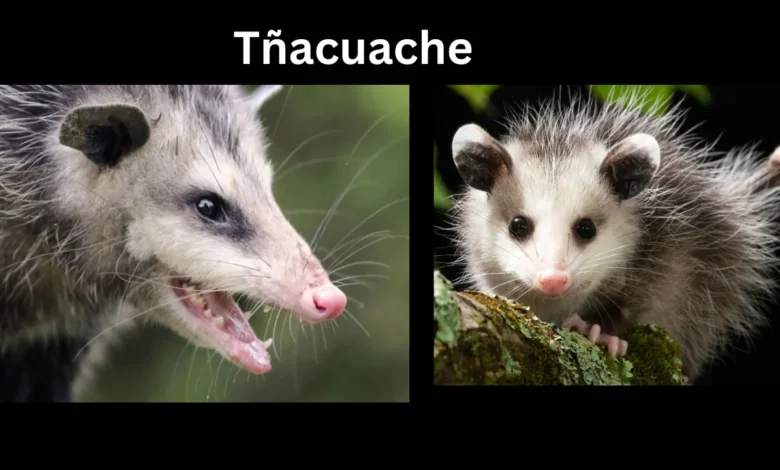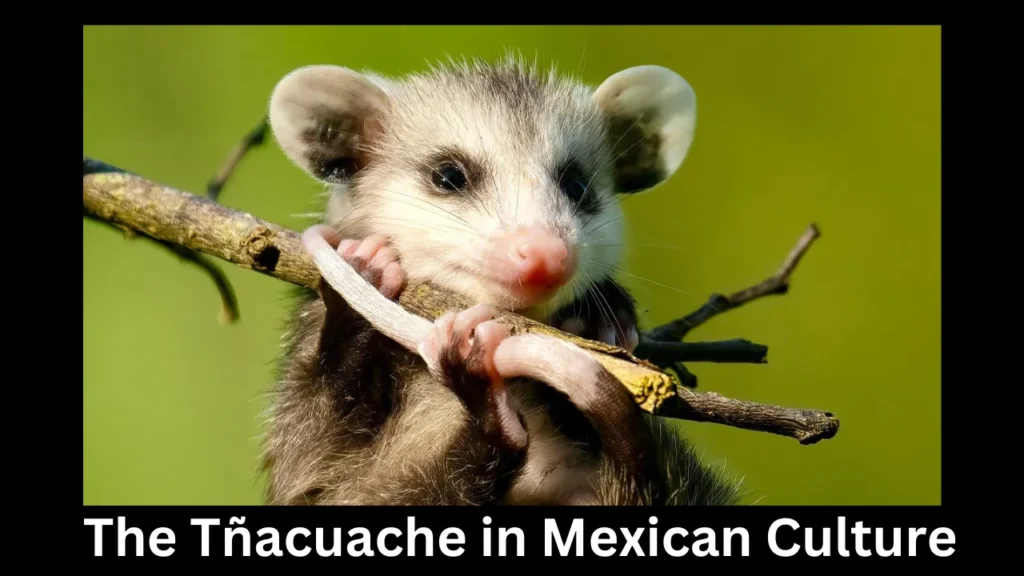Tñacuache Myths Facts And Ecological Hero

The tñacuache is one of the most intriguing animals in Mexican wildlife. Often spotted roaming at night, this unique creature has earned its place in cultural legends, myths, and even as a symbol of resilience. In this article, we’ll uncover everything you need to know about the tñacuache, including its characteristics, behaviors, and cultural significance. This unique animal has a surprising role in the ecosystem, helping balance nature in ways that many may not realize.
What is a Tñacuache
The tñacuache, also known as the Mexican opossum, is a small to medium-sized marsupial found throughout Mexico and parts of Central America. This animal, often confused with the opossum, is part of the Didelphidae family and is primarily nocturnal, meaning it’s most active at night. As a scavenger, the tñacuache plays an essential role in keeping the ecosystem clean, feeding on insects, fruits, and even small animals that may otherwise become pests.
Physically, it has some notable features. It has a pointed snout, long tail, and clawed feet that allow it to easily grip branches and hang upside down, which is one of its most memorable behaviors. It are typically light grey or brown, with a white face and black eyes. Their appearance has earned them a place in folklore and, for some, even fear due to their nocturnal habits and unusual look.
| Characteristic | Description |
|---|---|
| Scientific Name | Didelphis marsupialis |
| Common Name | Tñacuache (Mexican opossum) |
| Habitat | Found in forests, grasslands, urban areas across Mexico and parts of Central America |
| Physical Appearance | Light grey or brown fur, white face, black eyes; prehensile tail; clawed feet; weighs around 2-4 pounds |
| Behavior | Nocturnal and solitary; scavenger and opportunistic feeder; uses “playing dead” (thanatosis) as a defense mechanism |
| Diet | Omnivorous – eats fruits, insects, small animals, and occasionally garbage in urban areas |
| Role in Ecosystem | Controls pest populations, cleans up animal carcasses, eats ticks to help prevent tick-borne diseases |
| Lifespan | Typically 2-4 years in the wild, longer in captivity |
| Cultural Significance | Featured in Mexican folklore as a symbol of cleverness and bravery; mythically credited with bringing fire to humans |
| Conservation Status | Not currently endangered, but faces threats from habitat loss and urban expansion |
| Unique Features | Ability to hang from trees using its tail; “plays dead” to avoid predators; adapts well to diverse environments, from rural to urban areas |
ALSO READ: 03332029470 Caller or Scam And Who Is Behind
A Look at Tñacuache Behavior
The behavior of it is unique. As a solitary animal, it prefers to roam alone, although it may come together with others during mating season. One of the tñacuache’s most fascinating behaviors is its ability to “play dead” when threatened. This defense mechanism, known as thanatosis, involves the tñacuache falling over, stiffening its body, and even releasing a foul odor to appear less appealing to predators. This tactic works surprisingly well and has helped the tñacuache survive for centuries.
The diet of it is varied and opportunistic. It will feed on almost anything it can find, making it one of nature’s most effective scavengers. This diet plays a critical role in the ecosystem by managing insect populations and disposing of animal carcasses. Their adaptability to different diets has allowed them to survive in both rural and urban areas, where they are sometimes seen rummaging through garbage for food.
The Tñacuache in Mexican Culture

In Mexican culture, it holds a special place. Known as a creature of mystery, it is often featured in myths and legends. For example, there is a popular Mexican story about it as the bringer of fire to humanity. According to the myth, when humans had no fire, it was it who snuck into a god’s domain, stole a small flame, and delivered it to people. This tale has made it a symbol of cleverness and bravery, and it’s not uncommon to hear references to the animal in Mexican storytelling and traditional art.
In some regions, it is also believed to be a bad omen, particularly if it crosses your path at night. This belief likely stems from its ghostly appearance, especially when its eyes reflect in the dark. However, many people today see it as a harmless animal that simply plays an important role in nature.
ALSO READ: Gamma Telecom Holdings Ltd Voice, Data, And Mobile Solutions
Tñacuache’s Role in the Ecosystem
It plays a vital role in its ecosystem. As a scavenger, it helps prevent the spread of diseases by cleaning up decaying matter and controlling insect populations. This natural “cleanup” contributes to healthier environments, especially in areas where other natural scavengers may not be present.
Additionally, it are known to eat ticks, which helps reduce the risk of tick-borne diseases in their habitats. By feeding on these pests, it indirectly supports the health of other animals and humans alike. Its presence in the environment is a reminder of the interconnectedness of all species and how each one contributes to ecological balance.
| Feature | Description |
|---|---|
| Size | Small to medium, around 2-4 pounds |
| Color | Usually light grey or brown |
| Tail | Long, prehensile, allows hanging from trees |
| Feet | Clawed, excellent for climbing |
| Defense Mechanism | Plays dead, releases foul odor |
It body is perfectly adapted for its nocturnal lifestyle. Its sharp claws allow it to climb with ease, while its long tail provides balance and a means to hang from branches. These physical traits, combined with its unique ability to play dead, make it one of the more remarkable mammals in Mexican wildlife.
Tñacuache vs. Opossum: Are They the Same?
While it is often called an opossum, it’s important to note that it is specifically the Mexican opossum. There are many species of opossums, particularly in the Americas, and each has its own unique characteristics. The tñacuache shares common traits with opossums but is especially adapted to the environments of Mexico and Central America.
Unlike some North American opossums, it tends to be smaller and more solitary. They also have distinct cultural significance in Mexican folklore. Whereas opossums in other regions may not have the same symbolic value. This distinction highlights how animals, though biologically similar, can take on unique meanings depending on local cultures and traditions.
Common Myths and Facts About Tñacuache
Many myths surround it, especially in rural communities. One common myth is itsteal chickens and harm livestock. In reality, it are scavengers and are more likely to be drawn to garbage or dead animals rather than attack live poultry. Their nocturnal habits make them seem mysterious and sometimes lead people to assume they have supernatural abilities.
Another myth is that it is a dirty animal. While they do scavenge, they also groom themselves regularly, much like cats. Their scavenging behavior actually benefits humans by reducing the spread of disease and keeping the environment clean.
Is the Tñacuache in Danger?
It is not currently listed as endangered, but habitat loss due to urban expansion and deforestation is a concern. As cities expand, the natural habitat of it shrinks, forcing it to adapt to urban settings. Where it may face additional dangers like cars, domestic pets, and people who may harm it out of fear.
Conservation efforts that focus on preserving natural habitats indirectly support it population. By maintaining green spaces and educating communities on the animal’s ecological role. Humans can help ensure that the tñacuache continues to thrive in its natural environment.
Frequently Asked Questions
Are tñacuaches dangerous to humans?
No, it are not dangerous to humans. They are shy animals that avoid confrontation and only play dead when threatened. They may approach urban areas for food but pose no harm to people.
What do tñacuaches eat?
That are omnivores, meaning they eat both plants and animals. Their diet includes fruits, insects, small animals, and sometimes garbage in urban settings, which helps control pests and clean the environment.
Why is the tñacuache significant in Mexican culture?
In Mexican culture, it is often viewed as a clever and brave animal, especially due to a popular myth in which it brought fire to humans. This story has made it a symbol of resilience and resourcefulness.
Conclusion
The tñacuache is more than just a night wanderer in the wild. It’s a unique creature with fascinating behaviors, cultural significance, and an important role in the ecosystem. From its ability to “play dead” to its diet that keeps pests in check, the tñacuache serves as a reminder of nature’s resilience and the ways in which each species contributes to ecological health.

